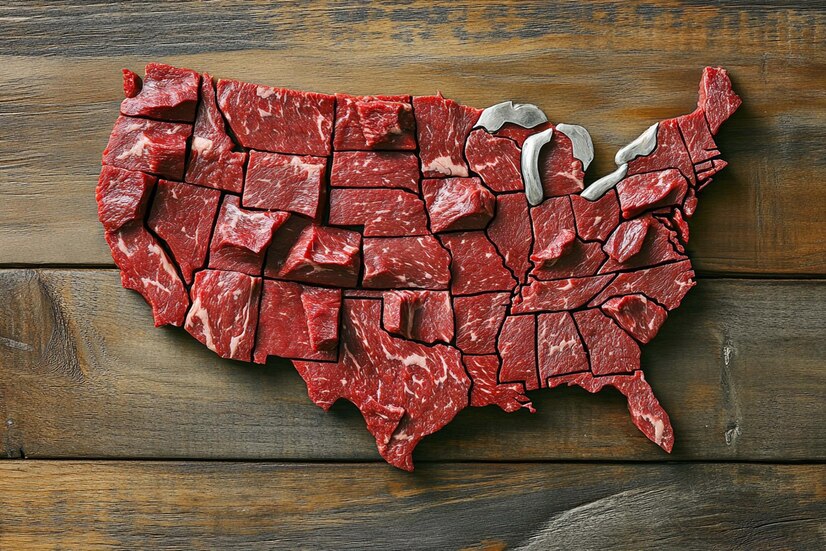What is Carnivore Month?
Carnivore Month is a dietary challenge where participants consume only animal products, typically for 30 days. It’s a strict form of the carnivore diet that excludes all plant-based foods like vegetables, fruits, grains, and legumes. The main focus is on meats like beef, pork, chicken, fish, and other animal-derived products like eggs, butter, and cheese. The idea behind Carnivore Month is to reset the body, eliminate potential dietary irritants, and enjoy the simplicity of eating only animal products.
The carnivore diet, in general, has been gaining popularity due to its claimed benefits for weight loss, inflammation reduction, and mental clarity. Carnivore Month takes this concept further by focusing on a one-month-long commitment, which makes it easier for people to test the effects without long-term commitment.
Benefits of Carnivore Month
1. Simplified Eating
One of the biggest advantages of participating in Carnivore Month is how simple meal planning becomes. You no longer have to worry about counting calories or balancing macros between carbs, proteins, and fats. Since you’re only eating meat and animal-based products, every meal revolves around a protein source, which eliminates decision fatigue and food confusion.
2. Weight Loss
Many people report weight loss during Carnivore Month. The high protein and fat content keep you satiated for longer periods, reducing the urge to snack between meals. By eliminating carbs and sugars, you minimize insulin spikes, which can aid in fat burning. Additionally, the body enters a state of ketosis, where it burns fat for energy, further enhancing weight loss.
3. Reduced Inflammation
Inflammation is often caused by various foods that can irritate the digestive system, such as grains, legumes, and processed sugars. Carnivore Month eliminates these potential irritants, which can lead to a noticeable reduction in bloating, joint pain, and overall inflammation in the body.
4. Improved Mental Clarity
Some participants of Carnivore Month report improved cognitive function and mental clarity. This may be due to the absence of sugar crashes, inflammation, and potential sensitivities to plant-based foods. By focusing on nutrient-dense animal products, the brain receives a steady stream of energy, which may improve focus, concentration, and mood stability.
5. Better Digestion
While some may initially experience digestive discomfort when transitioning to the carnivore diet, many report improved digestion after a few weeks. Carnivore Month eliminates plant-based fiber, which can sometimes irritate the gut in individuals sensitive to high-fiber diets. Instead, a meat-based diet can lead to regular bowel movements and reduced bloating.
Potential Challenges of Carnivore Month
1. Nutrient Deficiency Concerns
Critics of Carnivore Month often point to the risk of nutrient deficiencies. Without plant-based foods, participants may miss out on essential vitamins and minerals like vitamin C, magnesium, and potassium. However, some proponents argue that animal-based products, especially organ meats, provide sufficient nutrition when consumed properly. It’s essential to plan your meals carefully during Carnivore Month to ensure you’re meeting your nutritional needs.
2. Social and Lifestyle Adjustments
Eating only meat can make social situations challenging. Whether it’s eating out with friends or attending family gatherings, sticking to Carnivore Month may require special requests or bringing your own food. Additionally, many people are used to the variety of textures and flavors from a mixed diet, so the restrictive nature of Carnivore Month can feel monotonous.
3. Initial Fatigue or “Keto Flu”
As your body adapts to burning fat instead of carbohydrates, you may experience symptoms like fatigue, headaches, and brain fog, often referred to as the “keto flu.” This phase typically lasts for a few days to a week, after which many people report feeling more energetic and focused.
4. Food Boredom
While many enjoy the simplicity of a carnivore diet, others may find it difficult to stick with such a limited food selection. Eating only animal-based products can get repetitive, leading to food boredom. It’s essential to get creative with your meal preparation and try different cuts of meat, seasonings, and preparation methods to keep things interesting.
Best Foods for Carnivore Month
1. Beef
Beef is a staple in the carnivore diet due to its high fat content and nutrient density. Cuts like ribeye, sirloin, and ground beef are popular choices. Grass-fed beef is often recommended for its higher omega-3 fatty acid content.
2. Chicken
Chicken is another go-to option, though it’s typically leaner than beef. Dark meat like thighs and drumsticks offers more fat and flavor, which can help you meet your calorie needs.
3. Fish and Seafood
Fish, especially fatty varieties like salmon, mackerel, and sardines, provide essential omega-3 fatty acids. Shellfish like shrimp, crab, and lobster are also excellent choices to add variety to your meals during Carnivore Month.
4. Pork
Pork, particularly cuts like bacon, pork chops, and ribs, adds a different flavor profile to your meals. It’s high in fat and protein, making it a filling and satisfying choice for carnivores.
5. Eggs
Eggs are an incredibly versatile food in the carnivore diet. They’re packed with protein, healthy fats, and essential nutrients like vitamin D and choline. Whether scrambled, fried, or boiled, eggs can be a quick and easy addition to your meals.
6. Dairy (Optional)
Some carnivore dieters include dairy products like cheese, butter, and heavy cream. However, others avoid it due to potential sensitivities or lactose intolerance. If you tolerate dairy, it can be a valuable source of additional fat and calories.
Tips for Success During Carnivore Month
1. Meal Prep
To stay on track, consider preparing your meals in advance. Cook large portions of meat like roasts or steaks and store them in the fridge for quick and easy meals. Having pre-cooked options available will make it easier to avoid temptation and stick to the diet.
2. Stay Hydrated
Drinking enough water is crucial during Carnivore Month, especially since your body may lose water as you reduce carbohydrate intake. Consider adding a pinch of salt to your water to maintain electrolyte balance, which can help prevent symptoms of the keto flu.
3. Listen to Your Body
As you transition to an all-meat diet, your body may send signals that it’s adjusting. You might experience increased hunger, cravings, or fatigue. These symptoms often subside after the first week. Pay attention to how your body reacts, and don’t be afraid to adjust your fat and protein intake to meet your energy needs.
4. Experiment with Cooking Techniques
Grilling, roasting, pan-frying, and slow-cooking are all excellent ways to prepare meat. Experimenting with different methods can add variety to your meals and prevent boredom.
5. Keep It Simple
While it’s tempting to overcomplicate meals, Carnivore Month is about embracing simplicity. Focus on quality cuts of meat and straightforward preparation. There’s no need for elaborate recipes or excessive seasonings.
Sample Meal Plan for Carnivore Month
Day 1
- Breakfast: Scrambled eggs with bacon
- Lunch: Grilled ribeye steak
- Dinner: Roasted chicken thighs
Day 2
- Breakfast: Omelette with cheese
- Lunch: Pork chops with butter
- Dinner: Grilled salmon with shrimp
Day 3
- Breakfast: Hard-boiled eggs and sausage
- Lunch: Ground beef patties with cheddar cheese
- Dinner: Pan-seared lamb chops
Day 4
- Breakfast: Steak and eggs
- Lunch: Grilled chicken wings with blue cheese dip
- Dinner: Slow-cooked beef brisket
Day 5
- Breakfast: Fried eggs with butter
- Lunch: Grilled pork ribs
- Dinner: Roasted duck breast
How to Transition Off Carnivore Month
Once Carnivore Month ends, it’s important to transition carefully back to a more diverse diet if you choose to reintroduce plant-based foods. Slowly add in vegetables, fruits, and other whole foods to see how your body reacts. Many people use Carnivore Month as an elimination diet to identify food sensitivities, so reintroducing foods one at a time can help pinpoint what works best for you.
Conclusion
Carnivore Month offers a unique dietary experience that focuses on consuming only animal-based foods. While it may come with challenges, the benefits of weight loss, improved mental clarity, reduced inflammation, and better digestion make it a worthwhile experiment for many. Whether you’re looking for a reset or are curious about the carnivore lifestyle, Carnivore Month provides a structured opportunity to explore this meat-centric way of eating. By planning your meals, staying hydrated, and listening to your body, you can successfully complete the challenge and reap the potential rewards of this dietary journey.
FAQs
Is Carnivore Month safe for everyone?
Carnivore Month may not be suitable for everyone, especially those with pre-existing health conditions. It’s always best to consult with a healthcare professional before starting any new diet.
Can I eat processed meats during Carnivore Month?
While it’s possible to include processed meats like bacon or sausages, it’s best to focus on whole, unprocessed cuts of meat for optimal health benefits.
Will I get enough vitamins and minerals during Carnivore Month?
Animal-based products provide essential nutrients, but you may need to ensure you’re consuming organ meats or taking supplements to avoid deficiencies, especially in vitamin C and magnesium.
Can I drink coffee or tea during Carnivore Month?
While some strict carnivores avoid all plant-based products, others allow coffee and tea in moderation. It depends on your personal approach to the diet.
What happens if I cheat during Carnivore Month?
If you stray from the carnivore diet, it’s essential to get back on track as soon as possible. One cheat meal won’t ruin your progress, but consistency is key for optimal results.







